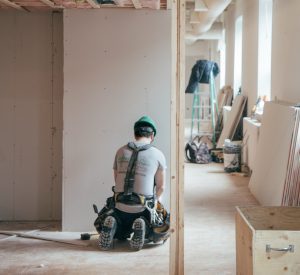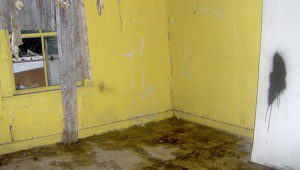How to Deal With Mold When You Find it During a Renovation
Sure, we have memories attached to each corner and nook of the house. We want our home to stay the same forever and ever. But when left unattended, things decay. To keep things existing and alive, you need to keep in touch. You need to keep a check and perhaps even make some exciting changes.
And when it comes to houses, we call these changes renovation. Certainly, the process comes with its own set of challenges, which can get as good as finding hidden treasure beneath that trap door you never bothered checking, or it can get as bad as finding moldMold is a type of fungus that grows in damp or humid conditi... More.
Yup. You read that right: fungus in your house. Like it is practically contributing to the decay. Well, we know you can deal with the good part. Allow us to provide you a leadLead is a heavy metal that can be toxic to humans, especiall... More about how to deal with the bad part, i.e., moldMold is a type of fungus that grows in damp or humid conditi... More.
Renovation & Hidden Surprises
Before we dive into the gist of this life-saving post, let us first pay some attention to the basics. Renovation, by definition, refers to any process which involves repairing or remodeling a damaged, broken, or outdated house. Now, the term outdated need not refer to a structureStructure refers to the framework or components of a buildin... More built half a century ago. It could perhaps be your house, which last got remodeled about five years ago. Or even two years. You know, the trends these days, they keep changing every day.
During the process of renovation, you will find several surprises. Sometimes you’ll come across that long-lost accessory of yours or perhaps a kid’s toy. Other times, you may uncover a brand new look for your house. And this is probably one of the most worthy reasons why we encourage home renovation. Even if everything feels in place and almost fine, it’s best to take some time out and get yourself refreshed with a renovation session.
As for the trouble, allow us to identify the spots and areas that could hold potential trouble. Read on further to find out more!
Identifying Mold & Where to look in Particular?
Usually, moldMold is a type of fungus that grows in damp or humid conditi... More makes itself quite apparent and noteworthy in terms of appearance. There are several different types of mold and each type has a unique appearance. The following are some common types and essential information about them. Whenever looking for moldMold is a type of fungus that grows in damp or humid conditi... More, check for the following details and their impact, which you will find in the latter part of this section.
• Alternaria:
You will find this velvet-like fungus growing in damp areas like bathtubs, leaking sinks, and showers. It may be dark green or brown.
• Aureobasidium:
Usually found between wooden surfaces, furniture, and behind wallpaper, Aureobasidium is pink, black, or brown. You may even find it growing in the backside of your desk shelf that is placed against the wall. The color shade intensifies as the moldMold is a type of fungus that grows in damp or humid conditi... More grows old.
• Cladosporium:
Cladosporium is the moldMold is a type of fungus that grows in damp or humid conditi... More that launches attacks in your cupboards and floorboards. It can survive in both hot & cold climates. And thus, it is difficult to control.
• Acremonium:
Acremonium is the fungus that you may find in window sealants, cooling coils, humidifiers, drain pans, etc. It may be pink, white, orange, or grey, and it begins developing as soft, moist moldMold is a type of fungus that grows in damp or humid conditi... More, which eventually turns into a powdery substance.
Moreover, there are several other types.
Health Impact of MoldMold is a type of fungus that grows in damp or humid conditi... More
As mentioned earlier, moldMold is a type of fungus that grows in damp or humid conditi... More can be quite damaging to your health. Fundamentally, there are three different types of moldMold is a type of fungus that grows in damp or humid conditi... More in terms of impact. These include:
- Allergenic: These types of molds may cause allergic reactions, such as asthma attacks. Alternaria is an example of allergenic moldMold is a type of fungus that grows in damp or humid conditi... More.
- Toxigenic: These types of molds leadLead is a heavy metal that can be toxic to humans, especiall... More to the development of a toxic environment, which may create deadly conditions even for healthy ones.
- Pathogenic: These types of molds may cause trouble for those with acute illnesses.
Given the health impact above, one cannot neglect moldMold is a type of fungus that grows in damp or humid conditi... More if found during renovation. You ought to find a solutionA solution is a homogeneous mixture of two or more substance... More to wipe it off from your house because, in any case, it does not do you any good.
Potential Solutions
Once identified, it’s time to tackle the problem. Perhaps, the first thing to do to acquire immediate results is call for a professional’s assistance. Conduct some research about the best mold removal companies in your locality and call in a reliable name.
The professional will use mold remediationMold remediation is the process of identifying, removing, an... More equipment. This professional equipment removes the moldMold is a type of fungus that grows in damp or humid conditi... More permanently along with eliminating the root cause of the spread. Thus, it prevents the moldMold is a type of fungus that grows in damp or humid conditi... More from coming back again.
Note that it is recommend to call a mold remediation only when you notice that the moldMold is a type of fungus that grows in damp or humid conditi... More spread is massive. In case it’s only a minor spread, we encourage you to look into the DIY approach mentioned ahead.
A DIY Approach
For getting rid of the moldMold is a type of fungus that grows in damp or humid conditi... More, you need to arrange a concentrated bleach. Note that the formula of bleach should be of premium quality and concentrated. Using diluted bleach will be the least effective and may not kill the moldMold is a type of fungus that grows in damp or humid conditi... More.
First, equip yourself with protective gear, including a mask, gloves, and goggles if necessary. Now, pour an appropriate quantity of bleach over the affected area. Although some people recommend using a cleaning tool, such as a floor brush over the bleach and mold-spread, we recommend that you refrain from doing this. Doing so will only spread the moldMold is a type of fungus that grows in damp or humid conditi... More unnecessarily. Let the bleach sit for a while. Next, wash it off or discard whatever you can (of the affected stuff).
However, as you proceed with this method, you must keep two things in check. Ensure that there is no cross-contaminationCross-contamination occurs when harmful substances, such as ... More. And also, make sure that you eliminate the root cause. You, most certainly, do not want the moldMold is a type of fungus that grows in damp or humid conditi... More to grow back again.
Final Thoughts
Summing up, dealing with moldMold is a type of fungus that grows in damp or humid conditi... More when you accidentally discover it during renovation is not a big deal, given that you follow the right procedure. Hence, if unfortunate luck strikes, take your time to do your research, analyze the situation, and only then, take the right step!












